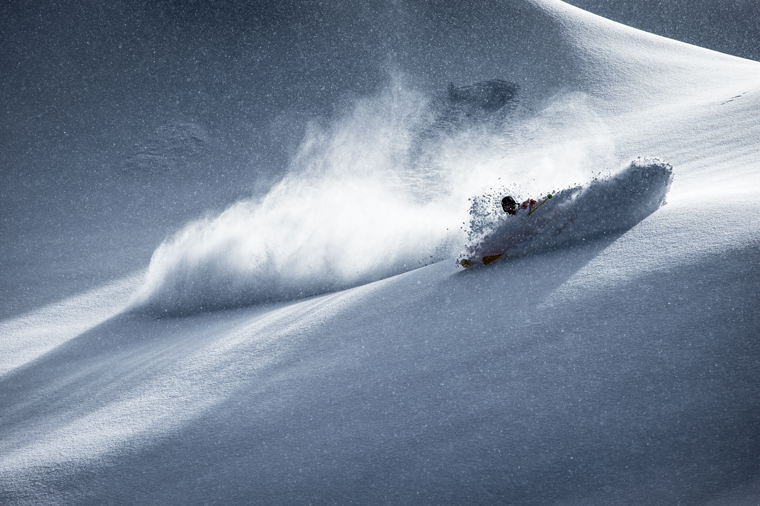Top ski photographer Pally Learmond on how to take brilliant backcountry snaps


First, bear in mind that great shots go hand in hand with great snow and light conditions, so you’ll need to channel
your inner meteorologist to keep track of those perfect storms. Next, try to scout the location you want to shoot beforehand, as it can save you a lot of energy and stress when that bluebird powder day finally comes. Third, rally the athletes together when it’s time to go shoot, and keep up a good line of communication beforehand as well as on the mountain.
Shooting photos can be complex and time-consuming, so consider getting some walkie-talkies and becoming as accurate as you can. Throwing snowballs, for example, is great for providing a visible mark for the skier to head towards.
Pally in front of the camera for a changeUnless you have one of the top-end DSLRs and a fast autofocusing lens, then you probably won’t be able to autofocus fast enough to keep track with a moving skier. Besides, this is still not the most reliable way to get pin sharp images. That’s why pre-focusing on where you envisage your athlete to be riding is a good idea. Look for nearby features, such as a tree, rock or mark in the snow from a snowball you’ve thrown and lock focus on that.
Even though you might think you know where most of the action is going to take place, you can never be 100% sure. Nowadays you’re very unlikely to be shooting on film, so don’t be afraid to keep firing off frames. For example, the moments between turns in deep powder can sometimes look the most dynamic, and the emotion some riders release after skiing a big line can also make for an interesting shot, so just keep shooting!
Basically, get a good bag. Your camera gear gets knocked around enough while you’re skiing, but if you take a fall then you’ll need the pack to be protected and padded. Once you take your camera out, close the pack up and even consider putting it back on. Days can be ruined very quickly when a bag gets filled with snow or even swept down the hill! Also, make sure your bag has ample room for backcountry safety equipment and any other extras you might need.
Walkie-talkie? Check. Snowball at the ready? Check. One of Pally’s knockout images from Eagle Pass, Canada.As with all backcountry skiing, you are entering a dangerous environment. Be aware of the snowpack and avalanche conditions and follow all of the necessary safety techniques. In terms of photography, be cautious of where you position yourself. It’s very easy when you’re looking through a camera to forget about the potential hazards around you, so be aware of getting hit by your athlete, or by other hazards that they could create, such as heavy sluff or an avalanche. Finally, be aware of the skiers’ safety. Some folk might do things for the camera they wouldn’t normally try. If having a camera present is the only reason they’ll ski something, then maybe tell them to think twice!